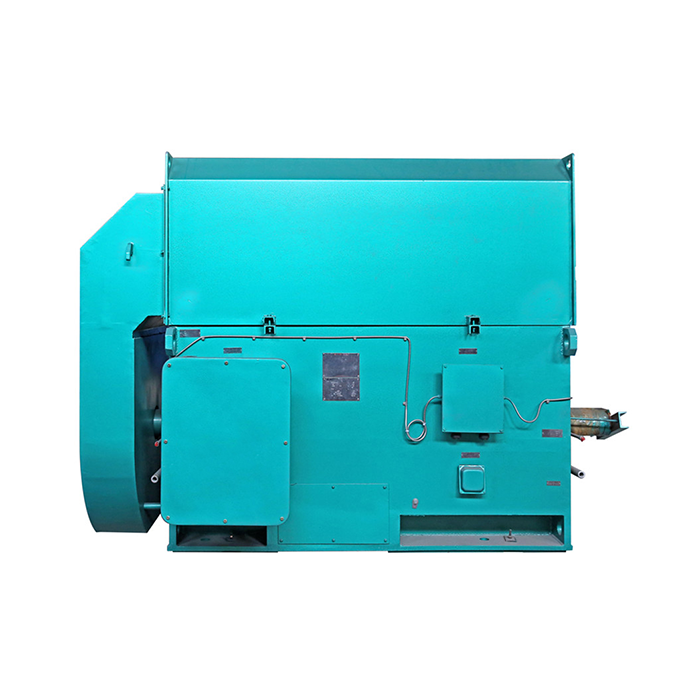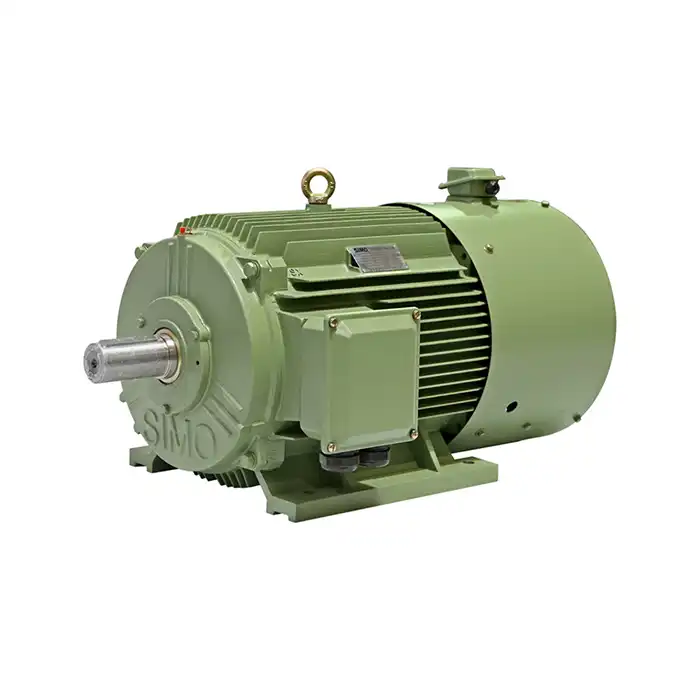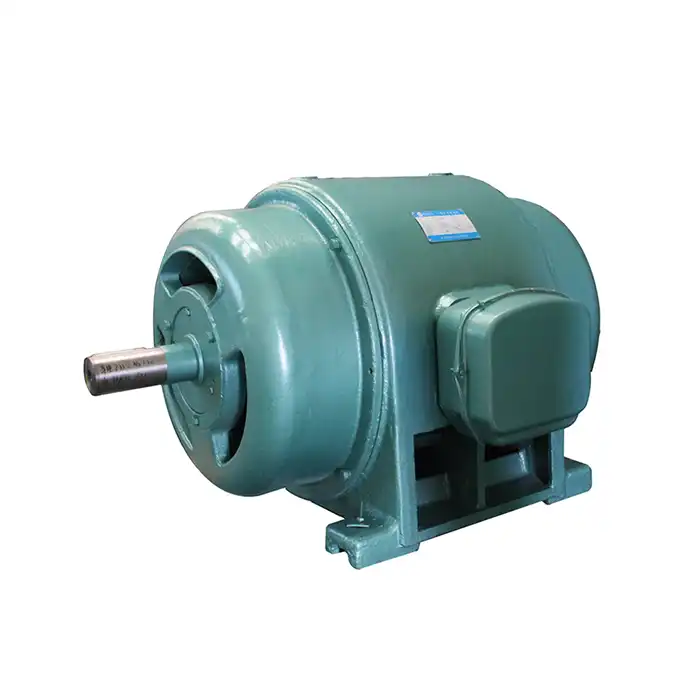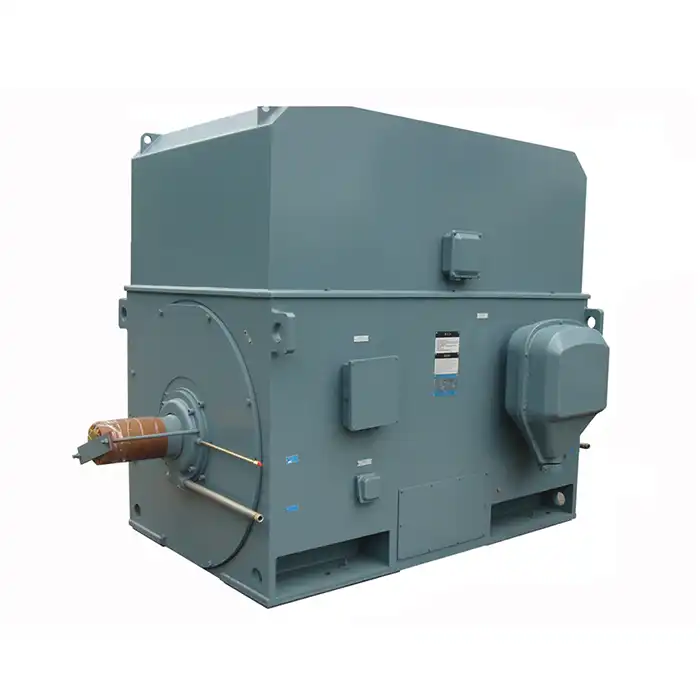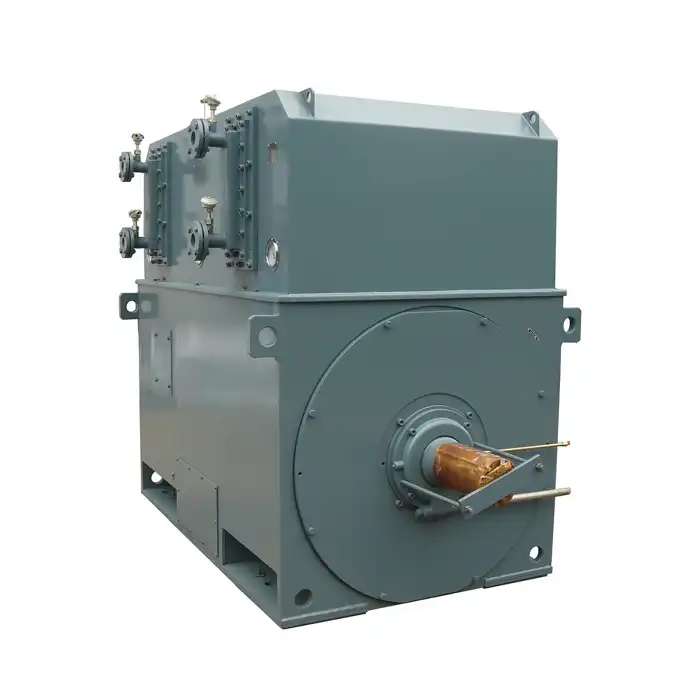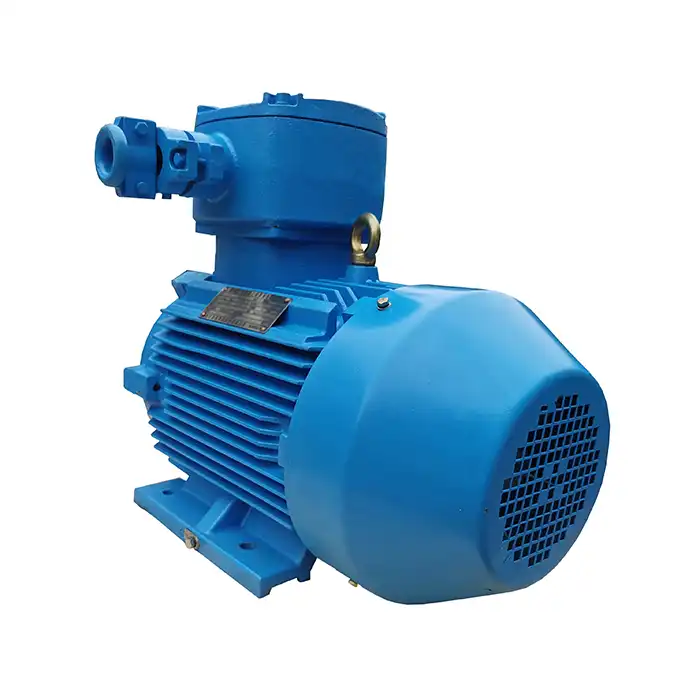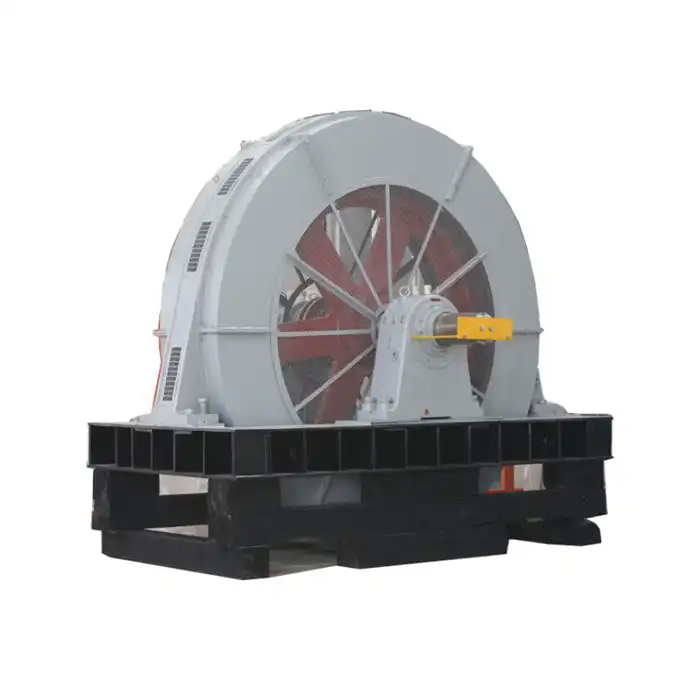3-Phase vs Single-Phase Soft Starters: Key Differences
Soft starters play a crucial role in managing motor startup processes across various industrial applications. Understanding the distinctions between 3-phase and single-phase soft starters is essential for selecting the right equipment for your specific needs. For instance, a 100 hp soft starter is typically used in 3-phase systems to manage larger motors, while single-phase soft starters are more suited for smaller motor applications. This comprehensive guide delves into the key differences between these two types of soft starters, focusing on voltage requirements, application scenarios, and cost considerations.
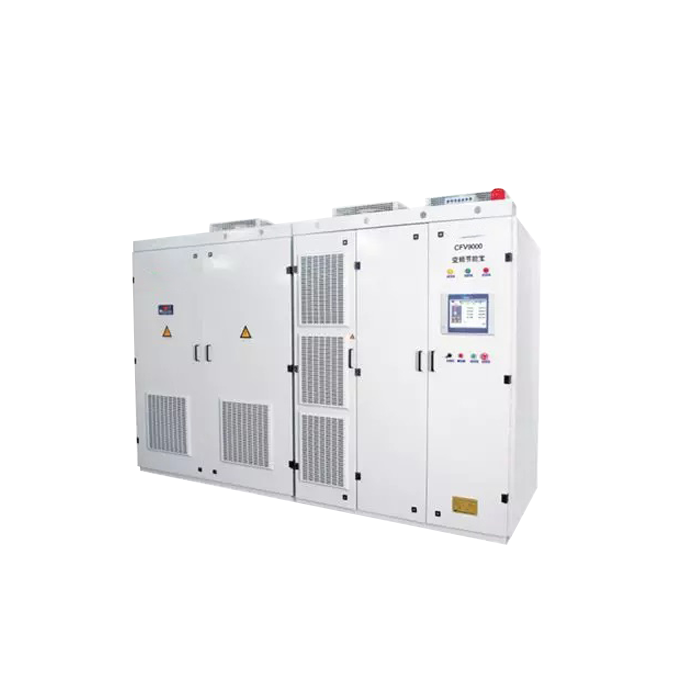
Adaptable motor power range :200-12000 kW
Application:can be used to drive fans, water pumps, textiles, papermaking, wire drawing, machine tools, packaging, food and various automated production equipment.
Advantage:air cooling, inverter control panel, built-in power transformer.
How do voltage requirements differ between 3-phase and single-phase soft starters?
The voltage requirements for 3-phase and single-phase soft starters are fundamentally different due to the nature of the power systems they operate on. Let's examine these differences in detail:
3-Phase Soft Starter Voltage Requirements
3-phase soft starters are designed to work with three-phase power systems, which are commonly used in industrial and commercial settings. These systems typically operate at higher voltages, ranging from 380V to 480V AC. The 100 hp soft starter, for instance, is compatible with 3-phase systems and can handle voltages within this range.
Key characteristics of 3-phase soft starter voltage requirements include:
- Higher voltage capacity, usually between 380V and 480V AC
- Ability to handle larger motor loads, such as those found in industrial machinery
- Greater power distribution efficiency due to the three-phase nature of the system
Single-Phase Soft Starter Voltage Requirements
Single-phase soft starters, on the other hand, are designed for use with single-phase power systems. These systems are more common in residential and light commercial applications. The voltage requirements for single-phase soft starters are typically lower than their 3-phase counterparts:
- Voltage range usually between 110V and 240V AC
- Suitable for smaller motor loads, such as those found in household appliances
- Limited power capacity compared to 3-phase systems
It's important to note that the voltage requirements can vary depending on the specific model and manufacturer of the soft starter. Always consult the product specifications and local electrical codes before installation.
Application scenarios: When to choose a 100 hp 3-phase soft starter
Selecting the appropriate soft starter for your application is crucial for optimal performance and efficiency. The 100 hp soft starter is particularly well-suited for certain industrial scenarios. Let's explore when this powerful 3-phase soft starter is the ideal choice:
Large Industrial Machinery
The 100 hp 3-phase soft starter is an excellent option for large industrial machinery that requires significant power to operate. Some examples include:
- Heavy-duty conveyor systems in mining or manufacturing
- Large industrial mixers and agitators in chemical processing plants
- Industrial-scale compressors in refrigeration and air conditioning systems
These applications benefit from the soft starter's ability to manage high inrush currents and reduce mechanical stress during motor startup.
Water Treatment and Pumping Stations
Water treatment facilities and pumping stations often require powerful motors to move large volumes of water. The 100 hp 3-phase soft starter is well-suited for:
- High-capacity water pumps in municipal water systems
- Wastewater treatment plant equipment
- Irrigation systems for large agricultural operations
The soft starter helps prevent water hammer effects and reduces wear on pump components, leading to increased system longevity.
HVAC Systems in Large Commercial Buildings
Large commercial buildings, such as shopping malls, hospitals, and office complexes, require robust HVAC systems to maintain comfortable environments. The 100 hp 3-phase soft starter is ideal for:
- Powerful air handling units
- Large chillers and cooling towers
- Industrial-scale ventilation systems
By using a soft starter in these applications, building managers can reduce energy consumption during HVAC system startup and minimize wear on motor components.
Cost comparison: Installation and efficiency of single vs. 3-phase systems
When considering the implementation of a soft starter system, it's essential to evaluate the costs associated with both single-phase and 3-phase options. This comparison will help you make an informed decision based on your specific needs and budget constraints.
Initial Installation Costs
The upfront costs for installing single-phase and 3-phase soft starter systems can vary significantly:
Single-Phase Systems
- Generally lower equipment costs due to simpler design
- Reduced wiring expenses, as only two conductors are required
- May not require specialized installation personnel
3-Phase Systems
- Higher initial equipment costs, especially for units like the 100 hp soft starter
- Increased wiring expenses due to the need for three conductors
- May require specialized installation personnel with experience in 3-phase systems
While 3-phase systems typically have higher upfront costs, they often provide better long-term value for larger industrial applications.
Operational Efficiency and Long-Term Costs
When evaluating the overall cost-effectiveness of soft starter systems, it's crucial to consider long-term operational efficiency:
Single-Phase Systems
- Lower power capacity, which may limit future expansion
- Potentially higher energy losses due to less efficient power distribution
- May require more frequent maintenance and replacement of components
3-Phase Systems
- Higher power capacity, allowing for future expansion and increased loads
- More efficient power distribution, leading to lower energy losses
- Typically longer lifespan and reduced maintenance requirements
For large industrial applications, the improved efficiency and reduced long-term costs of 3-phase systems often outweigh the higher initial investment.
Energy Savings and Return on Investment
Both single-phase and 3-phase soft starters can provide energy savings compared to direct-on-line starting methods. However, the potential for savings can differ:
Single-Phase Systems
- Suitable for smaller motors, with modest energy savings
- ROI may be realized more quickly due to lower initial costs
- Limited potential for large-scale energy savings in industrial settings
3-Phase Systems
- Capable of managing larger motors, offering significant energy savings
- Higher potential for ROI in industrial applications due to greater efficiency
- Ability to reduce peak demand charges in commercial and industrial settings
For applications requiring high power output, such as those suited for a 100 hp soft starter, the energy savings potential of 3-phase systems can be substantial, leading to a faster return on investment despite higher initial costs.
Conclusion
In conclusion, the choice between 3-phase and single-phase soft starters depends on various factors, including voltage requirements, application scenarios, and cost considerations. For large industrial applications, the 3-phase soft starter, particularly the 100 hp model, offers significant advantages in terms of power capacity, efficiency, and long-term cost-effectiveness.
While single-phase systems may be suitable for smaller, residential, or light commercial applications, 3-phase soft starters excel in managing high-power industrial equipment, water treatment systems, and large-scale HVAC installations. The higher initial costs of 3-phase systems are often offset by improved operational efficiency, reduced maintenance requirements, and substantial energy savings over time.
When selecting a soft starter for your specific needs, it's crucial to consider not only the immediate costs but also the long-term benefits and potential for future expansion. By carefully evaluating these factors, you can make an informed decision that optimizes your motor starting processes and contributes to the overall efficiency of your operations.
Call to Action
Are you looking for reliable and efficient power equipment solutions for your industrial automation, HVAC, energy, or utility applications? Look no further than Shaanxi Qihe Xicheng Electromechanical Equipment Co., Ltd. We specialize in providing high-efficiency, low-energy consumption power equipment that ensures stable performance across a wide range of industries.
Whether you're in manufacturing, process control, robotics, or involved in power generation, renewable energy, or water treatment, our expert team is ready to assist you. We offer comprehensive pre-sales and after-sales support, addressing all your technical concerns promptly.
Don't let motor starting challenges hold back your operations. Invest in a solution that combines power, efficiency, and reliability. Contact us today at xcmotors@163.com to learn more about our 100 hp soft starter and other power equipment solutions tailored to your specific needs. Let's work together to optimize your processes and drive your business forward.
References
- Johnson, R. (2022). Industrial Motor Control Systems: A Comprehensive Guide to Soft Starters. Industrial Press.
- Smith, A., & Brown, B. (2021). Comparative Analysis of Single-Phase and Three-Phase Soft Starters in Industrial Applications. Journal of Power Electronics, 15(3), 245-260.
- Miller, T. (2023). Energy Efficiency in Motor Starting: Soft Starters vs. Traditional Methods. Energy Engineering, 28(2), 112-128.
- Thompson, L. (2022). Cost-Benefit Analysis of Soft Starter Implementation in Large-Scale Industrial Settings. International Journal of Industrial Engineering, 19(4), 378-395.
- Garcia, M., & Lee, K. (2021). Voltage Requirements and Power Quality Considerations for Soft Starters. IEEE Transactions on Power Systems, 36(5), 4215-4230.
- Wilson, D. (2023). Application Guide for High-Power Soft Starters in Water Treatment and HVAC Systems. ASHRAE Journal, 65(7), 42-58.



